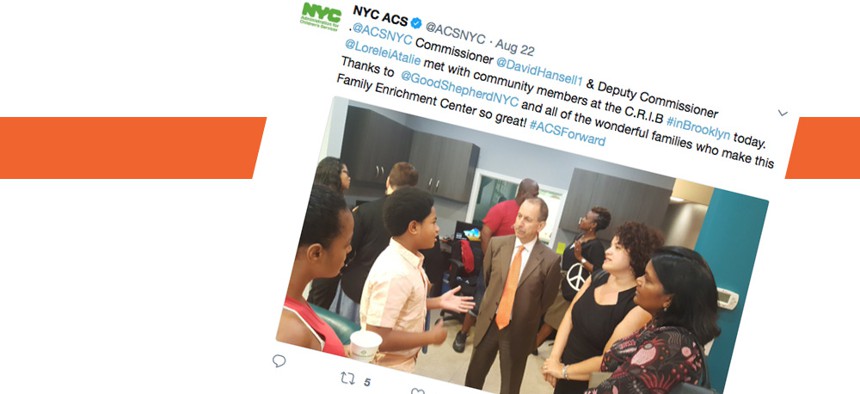New York City's new family enrichment centers aim to prevent problems
Family enrichment centers are being designed from their inception as a neighborhood-based, proactive approach to addressing issues early on.

Family Enrichment Center in New York City Twitter
We all know, from our own lives, the importance of heading off problems early, before they grow out of control.
We seek preventive medical care to catch ailments early, when they are more easily treated. Similarly, we develop relationships with our neighbors and friends. When we have problems, we rely on those connections to offer support, both physical and emotional.
This basic preventative technique rests at the heart of the city’s three new family enrichment centers. All too often at the Administration for Children’s Services, we see families only after their troubles have metastasized. Perhaps the police and the courts are already involved. And the remedies, while necessary, are reactive rather than proactive.
"These centers are predicated on the beliefs that families know what they need in order to thrive."
In contrast, family enrichment centers are being designed from their inception as a neighborhood-based, proactive approach to addressing issues early on. They will help communities build important connections among residents and offer the supports families identify and need, to prevent problems from reaching a crisis state. Our goal is to prevent families from ever having to come into contact with the child welfare system.
The centers, located in Hunts Point, East New York and Highbridge, will each serve approximately 1,000 families per year. These communities were identified after 18 months of research, design and interactive development. We have looked nationwide to find practices that showed the most effectiveness and incorporated those into the design of the centers.
The community element is not window-dressing for another government program. Everything about the center — including its name, the physical layout, and the offerings it provides — is co-developed with the community. This requires from government and other funders both patience and an ideological shift in how we think about our role in caring for communities, families and children.
Each site has a director, one to two parent advocates, and a community liaison. And they will be run in close consultation with those local parents and community members, who bring their shared experiences to help determine what their communities’ needs are. The centers will focus on eight key areas that we know are key to decreasing child maltreatment and improving family well-being: economic stability and employment, parenting skills, health and wellbeing, housing, child development and education, positive relationships, community engagement, and supportive advocacy. Offerings may include dads’ cooking classes, financial literacy workshops or college prep courses.
The Administration for Children’s Services is funding the new centers under the auspices of its newly created Division of Child and Family Well-Being. We have appropriated the necessary resources to ensure that the centers have what they need to succeed. Each contracted site will receive $450,000 a year and ACS is allocated an additional $150,000 for training, technology and other costs.
These centers are predicated on the beliefs that families know what they need in order to thrive. We believe these incredible strengths are inherent in every community and the centers allow us to tap into them in an unprecedented, coordinated effort.
Stress and adversity are a part of life. Family Enrichment Centers will not prevent all of the adversities that affect our families, but they will reduce the risk and occurrence of child trauma, honor our families’ strengths, and build valuable community connections. The programs will be free and open to all who want to take advantage of what their communities have built.
